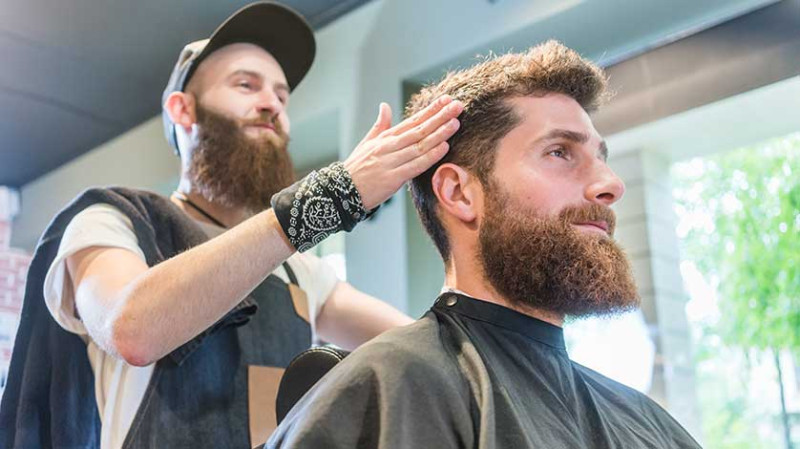
If you’ve ever found yourself scrolling through creative hairstyle videos, admiring perfectly blended balayage, or even transforming your own look with scissors and colour, then becoming a hairstylist might have already crossed your mind. But is it the right path for you? Whether you're a DIY enthusiast, exploring career changes, or working in the creative fields like architecture and design with an eye for transformation, the world of professional hairstyling could offer more than you think.
What Is a Hairstylist?
A hairstylist is more than someone who just cuts and colours hair. They are artists, listeners, problem-solvers, and trendsetters. From creating classic cuts to keeping up with seasonal trends in colour and styling, hairstylists provide services that blend creativity with technical skill.
In addition to cutting and styling, their work may involve shampooing, blow-drying, perming, and even extensions. Many also become advisors—offering product and maintenance suggestions and helping people feel confident in their personal appearance.
Working as a hairstylist is not limited to beauty salons. Today, many professionals work freelance, travel for photoshoots and fashion shows, or even establish their home studios. For those with a DIY spirit, it's an enticing opportunity to take creativity into a practical, people-centred career.
Why Consider a Career in Hairdressing?
Hairdressing offers a unique combination of creativity, job security, and social interaction. It's a career where you can see the immediate impact of your work—sometimes within an hour. For those who enjoy hands-on experiences and tangible results, it’s incredibly satisfying.
Let’s not forget flexibility. If you’re weary of the 9-5 office grind or looking for residual income potential, hairstyling opens doors to self-employment and schedule autonomy. Many stylists start off in salons and later move on to rent booths, open their own spaces, or launch mobile styling services.
The industry is also one of the few where there will always be demand, regardless of economic shifts. People continue to invest in looking and feeling their best—making hairstyling a resilient and recession-resistant field.
Additionally, it's an ever-evolving industry driven by fashion trends, celebrity influence, and product innovations. If you love keeping ahead of the curve and sharing your eye for style with others, hairdressing becomes more than a job—it’s a lifestyle.
Skills You'll Need to Succeed
Success doesn't hinge solely on your ability to trim split ends. To thrive in this industry, you'll need a combination of technical and interpersonal skills. Some of those include:
- Creativity and Vision: Evaluating a client’s face shape, hair texture and personal style calls for imaginative thinking and visualisation.
- Technical Proficiency: Mastery in cutting, colouring, and styling techniques is essential—training and experience help sharpen these skills.
- People Skills: A good hairstylist is approachable, a good listener, and can earn clients’ trust quickly.
- Adaptability: Trends change quickly. The willingness to learn new methods and tools keeps your skills fresh and in-demand.
- Business Savvy: Especially if you’re going freelance or aiming to open a salon, knowledge in marketing, customer management, and budgeting is crucial.
Thankfully, these skills can be honed with the right training and hands-on experience. Apprenticeships and NVQ certificates in the UK offer structured paths for new stylists to build competence and confidence.
Training and Qualifications in the UK
In the United Kingdom, hairstyling is a recognised professional career with standardised training routes. Most aspiring hairstylists begin with an apprenticeship, which allows learners to earn while they train under the guidance of experienced professionals.
There are several qualifications you can obtain to formalise your skills:
| Qualification | Level | Description |
|---|---|---|
| NVQ Level 2 Diploma in Hairdressing | Intermediate | Covers basic services such as cutting, colouring, and customer service. Often the first step into the industry. |
| NVQ Level 3 Diploma in Hairdressing | Advanced | Goes deeper into creative styling techniques, advanced colouring, and even business management. |
| Apprenticeships | Level 2-3 | Work-based training where you learn on the job under a salon professional while earning a wage. |
Many colleges and private institutions across the UK offer evening classes and flexible diplomas—ideal for those with jobs or other commitments. Once qualified, you can register with the Hair and Barber Council, which offers professional recognition and exposure.
Career Opportunities and Earning Potential
One of the great things about entering the hair industry is its wide scope. You are not limited to working in a high street salon—though this is a perfectly respectable path. You could specialise in bridal hair or film and TV styling, or become a colour technician, barber, or even a platform artist showcasing skills at trade exhibitions.
Here’s a general outlook on hair professional earning potential in the UK:
- Junior Stylist: £14,000 – £18,000 per year
- Stylist with 2-5 years experience: £18,000 – £25,000
- Senior or Freelance Stylist: £25,000 – £40,000+
- Salon Owner or Specialist: £40,000 – £60,000+
Earnings can vary based on geography, clientele, services offered, and how much you work. Stylists who build a loyal customer base often enjoy steady income and referrals—particularly in areas like London, Manchester, and Edinburgh.
Is Hairdressing Right for You?
Before diving in, it's important to assess your passions and strengths. Do you enjoy being on your feet and working with people? Are you someone who thrives in creative environments and takes pride in visual aesthetics? Do you get satisfaction from making others feel their best?
While the industry can be highly rewarding, it also brings challenges. Long hours, weekend work, and sometimes demanding clients require patience and professionalism. However, for those who love interaction and hands-on creativity, it’s a thriving and meaningful profession.
It might help to speak with local stylists, visit salons, or attend events like Salon International UK to get a real taste of industry life. Even shadowing a stylist for a day can offer invaluable insight into the daily routine and rewards.
Final Thoughts: A Career of Creativity, Style and Independence
Becoming a hairstylist in the UK offers more than abundant job opportunities—it offers a vibrant lifestyle defined by creativity, social interaction, and ongoing personal development. For DIY lovers, professional tradespeople looking for a creative shift, or design-minded individuals, hairdressing is a career that aligns with both practical skills and artistic expression.
Best of all, it’s a path where you're in control. From the tools you use to the clients you serve, few careers offer the same level of autonomy, personal satisfaction, and the chance to make people feel amazing—as hairstyling does.
So, are you ready to make the cut?





